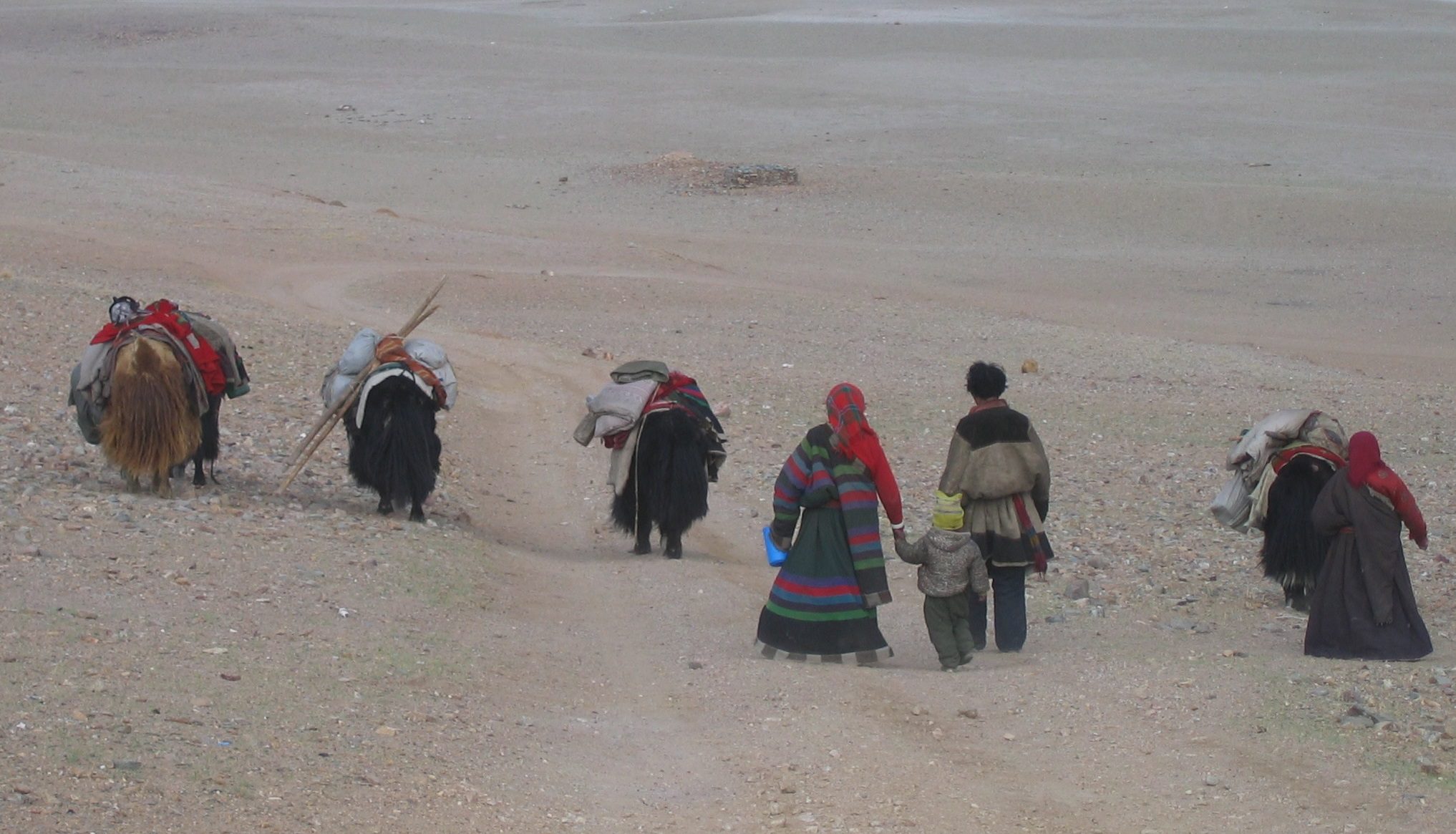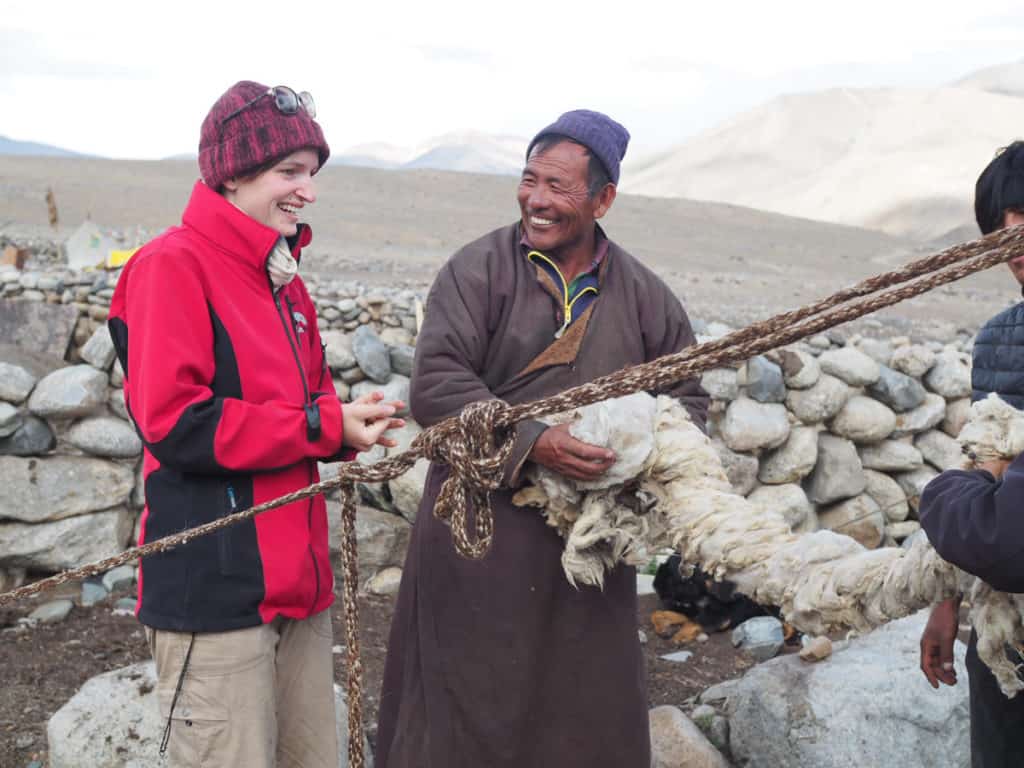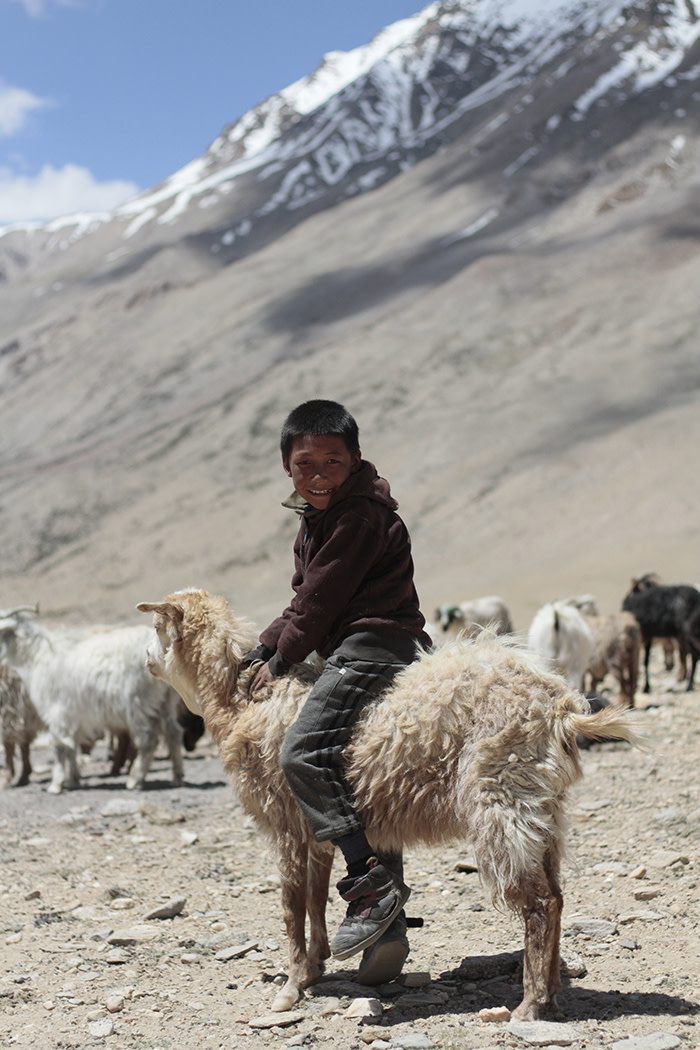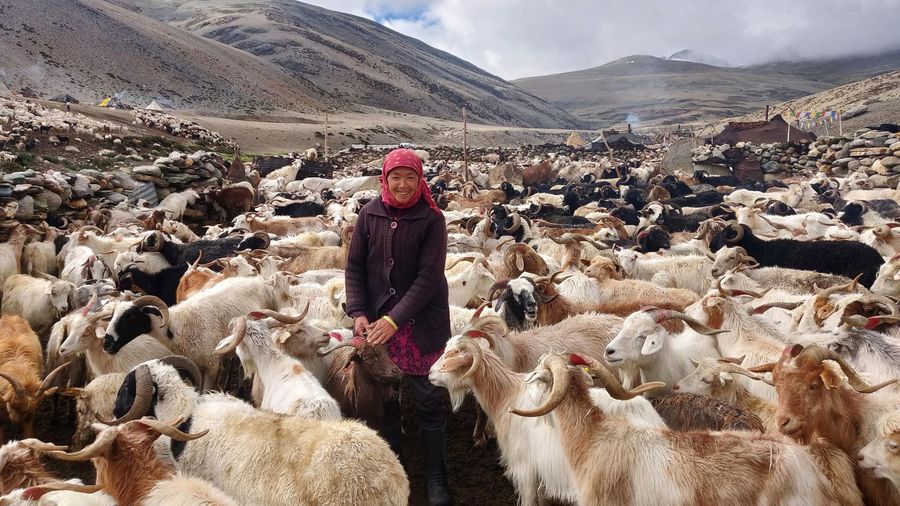Nomadic Shepherds of Ladakh, nestled in the rugged, high-altitude region of Ladakh, the Changpa nomads are among the last remaining true nomadic herders in the Indian Himalayas. The Changpa tribes, custodians of an ancient way of life, have thrived for centuries in one of the most unforgiving climates on Earth—the Changthang Plateau. Their lifestyle, which revolves around pastoralism, has remained relatively unchanged, passing through generations as they move with their Pashmina goats, yaks, and sheep across the barren yet breathtakingly beautiful landscape. This post explores a day in the life of the Changpa shepherds and the challenges they face in their nomadic lifestyle.
The Changpa Tribe: Guardians of Ladakh’s Nomadic Heritage
The Changpa people belong to an ancient community that is believed to have migrated from the Tibetan Plateau centuries ago. Today, they continue to maintain their semi-nomadic lifestyle, surviving in an area that sits at altitudes of over 14,000 feet. Their home, the Changthang Plateau, which extends from Ladakh into Tibet, is known for its harsh climate, with temperatures often plunging below -30°C during the winter months.
Despite the hardships, the Changpa tribes have built a sustainable lifestyle centered around pastoral herding, particularly of Pashmina goats, whose wool is highly prized worldwide. These nomads follow a transhumant lifestyle, moving their flocks seasonally to find fresh pastures.

The Origins of Changpa Nomads
The Changpa people trace their lineage to Tibetan nomads and have lived in Ladakh for centuries. Their transhumant practices, which involve moving livestock between summer and winter pastures, are rooted in deep historical and cultural ties with the Tibetan Plateau. This unique blend of Buddhist and Tibetan influences shapes their daily lives, rituals, and festivals.
Tibetan Buddhism and the Spiritual Life of Changpa People
For the Changpa tribes, spirituality is intricately woven into their nomadic lifestyle. The Changpa people are devout followers of Tibetan Buddhism, and their belief system influences everything from their festivals to the way they interact with the environment. Many Buddhist monasteries in Ladakh, such as the Tso Moriri Monastery, serve as spiritual hubs for the Changpa people. Their nomadic routes often bring them close to these monasteries, reinforcing their faith and offering them moments of peace amidst their physically demanding lives.
The Nomadic Lifestyle in Ladakh’s Extreme Environment
The Changpa shepherds live in one of the harshest climates on Earth, where survival itself is a challenge. With bitterly cold winters, long treks across barren lands, and the constant threat of predatory animals like snow leopards, their nomadic way of life is a testament to human endurance and adaptability.
Seasonal Migration and Its Importance to Changpa Herders
The key to the Changpa nomads’ survival lies in their seasonal migration patterns. Every year, the Changpa people embark on long journeys, moving between winter and summer pastures. This practice, known as transhumance, allows them to ensure that their herds have access to grazing lands throughout the year. In summer, they move to higher altitudes where the grass is fresh and abundant, while in winter, they descend to warmer areas, avoiding the extreme cold of the Changthang Plateau.
This migration pattern is vital for the survival of both the Changpa people and their livestock. The Changpa rely heavily on their animals—not only for food but also for income through the production of Pashmina wool.
Living in Rebos: The Traditional Tents of Changpa Nomads
During their migrations, the Changpa nomads live in Rebos, traditional yak-hair tents designed to withstand the region’s extreme weather conditions. These tents are portable, lightweight, and durable, offering much-needed warmth during the bitter winters. Inside a Rebo, the Changpa families create cozy living spaces, using animal skins, woolen blankets, and yak dung fires for heating. For the Changpa shepherds, the Rebo is more than just shelter—it is a symbol of their nomadic identity and resilience.

The Role of Pashmina Goats in Changpa Pastoralism
The Changpa shepherds are the proud guardians of the world-famous Pashmina goats, which produce the finest wool used in making luxurious Pashmina shawls. These goats are at the heart of the Changpa economy, and their wool is the tribe’s most valuable resource. The unique climatic conditions of the Changthang Plateau cause the Pashmina goats to grow a thick undercoat, which is later collected and spun into Pashmina wool.
The Pashmina Wool Industry: A Key to Survival
The process of producing Pashmina wool is painstaking and requires great skill. Each spring, the Changpa herders collect the soft undercoat from their goats, which is then spun into wool. This wool is transported to Leh, Ladakh’s capital, where it is further refined and sold to artisans who transform it into shawls, scarves, and other luxury items. The demand for Pashmina wool has made the Changpa nomads an essential part of the global fashion industry, though they continue to live in humble conditions.
Yak Herding and Other Livestock of Changpa Shepherds
While Pashmina goats are central to the Changpa economy, the tribe also herds yaks, sheep, and horses. Yaks, in particular, are indispensable to their survival in the Changthang Plateau. These hardy animals provide milk, meat, and fur and are used as beasts of burden during the seasonal migrations. The Changpa people’s livestock herding practices reflect a deep understanding of the natural environment and a sustainable approach to pastoralism.
The Daily Life of Changpa Shepherds
A day in the life of a Changpa shepherd begins at the break of dawn. With the rising sun, the nomads set out to tend to their animals, ensuring that the goats, yaks, and sheep are fed and cared for. The work is physically demanding, requiring constant vigilance to protect the herds from predators like wolves and snow leopards.
Early Morning Routines and Animal Care
In the early morning, the Changpa shepherds check on their herds, ensuring the animals are healthy and well-fed. During the warmer months, the flocks graze on the high-altitude pastures of the Changthang Plateau, while in winter, they are moved to lower elevations. The Changpa people work as a community, often sharing the responsibilities of herding, milking, and protecting the livestock from threats.
Community Life and Social Structure of Changpa Nomads
The Changpa tribes are tightly-knit communities where everyone plays a role. Changpa women are particularly active, contributing to the herding and taking charge of domestic chores such as weaving wool and preparing food. The nomads practice a form of collective decision-making, with elders and heads of families coming together to resolve disputes, plan migrations, and ensure the community’s wellbeing.

Adapting to Change: Challenges and Opportunities for the Changpa Nomads
While the Changpa tribes have lived harmoniously with nature for centuries, modern challenges threaten their way of life. Climate change, government policies, and the intrusion of modernity are all factors that have made it increasingly difficult for the Changpa people to maintain their nomadic lifestyle.
Climate Change and Its Impact on Nomadic Life
Climate change is one of the biggest threats to the Changpa nomads. Unpredictable weather patterns and diminishing grazing lands are making it harder for the Changpa people to sustain their herds. As temperatures rise, the delicate balance between man, animal, and nature is disrupted, forcing many nomads to reconsider their traditional lifestyle.
Government Initiatives and Future of Changpa Nomadic Pastoralism
In recent years, the Indian government has launched initiatives to help preserve the Changpa nomadic lifestyle, providing assistance in the form of subsidies for wool production and healthcare services. However, some policies aimed at modernizing the region, such as infrastructure development, have disrupted the Changpa people’s migratory routes and traditional ways of life. It remains to be seen how these changes will affect the future of Changpa pastoralism.
The Cultural Significance of Changpa Tribes in Ladakh
The Changpa nomads are more than just herders; they are the guardians of Ladakh’s rich cultural heritage. Their traditions, festivals, and close connection to nature are integral to the identity of the region.
Festivals and Traditions of the Changpa People
The Changpa people celebrate several festivals that are deeply rooted in their Buddhist faith. Festivals such as Losar (Tibetan New Year) bring the community together for days of singing, dancing, and religious rituals. These celebrations not only strengthen community bonds but also reaffirm their connection to their spiritual heritage.
The Role of Changpa Women in Nomadic Life
Changpa women play a vital role in both herding and household management. They are skilled in weaving Pashmina wool, managing the home, and caring for the children while the men tend to the larger herds. Their contributions ensure the sustainability of the Changpa lifestyle, despite the numerous challenges they face.
Conclusion
The Changpa nomads of Ladakh represent a way of life that has thrived for centuries in one of the world’s most extreme environments. Despite the challenges posed by climate change and modernization, they continue to maintain their nomadic traditions, passing their knowledge from generation to generation. The resilience, adaptability, and cultural richness of the Changpa people are a testament to human survival in harmony with nature.

Frequently Asked Questions (FAQs)
1. Who are the Changpa people?
The Changpa are a nomadic tribe living in the high-altitude region of Ladakh, particularly in the Changthang Plateau. They are pastoralists who herd Pashmina goats, yaks, and sheep.
2. Why are Pashmina goats important to the Changpa nomads?
Pashmina goats produce a valuable undercoat that is spun into Pashmina wool, a luxury item sold globally. This wool is the primary source of income for the Changpa people.
3. What challenges do the Changpa nomads face today?
Climate change, modern infrastructure development, and diminishing grazing lands threaten the traditional lifestyle of the Changpa nomads. Government policies and environmental changes are making it harder for them to continue their pastoral practices.
4. How do Changpa nomads migrate?
The Changpa follow a seasonal migration pattern, moving between higher altitudes in the summer and lower elevations during winter. This practice is essential for finding fresh pastures for their livestock.
5. What is a Rebo?
A Rebo is a traditional yak-hair tent used by Changpa nomads. It is portable, warm, and designed to withstand the extreme weather conditions of Ladakh.
6. What role do Changpa women play in nomadic life?
Changpa women are responsible for weaving Pashmina wool, managing household tasks, and participating in herding. They play a critical role in maintaining the sustainability of their community.








